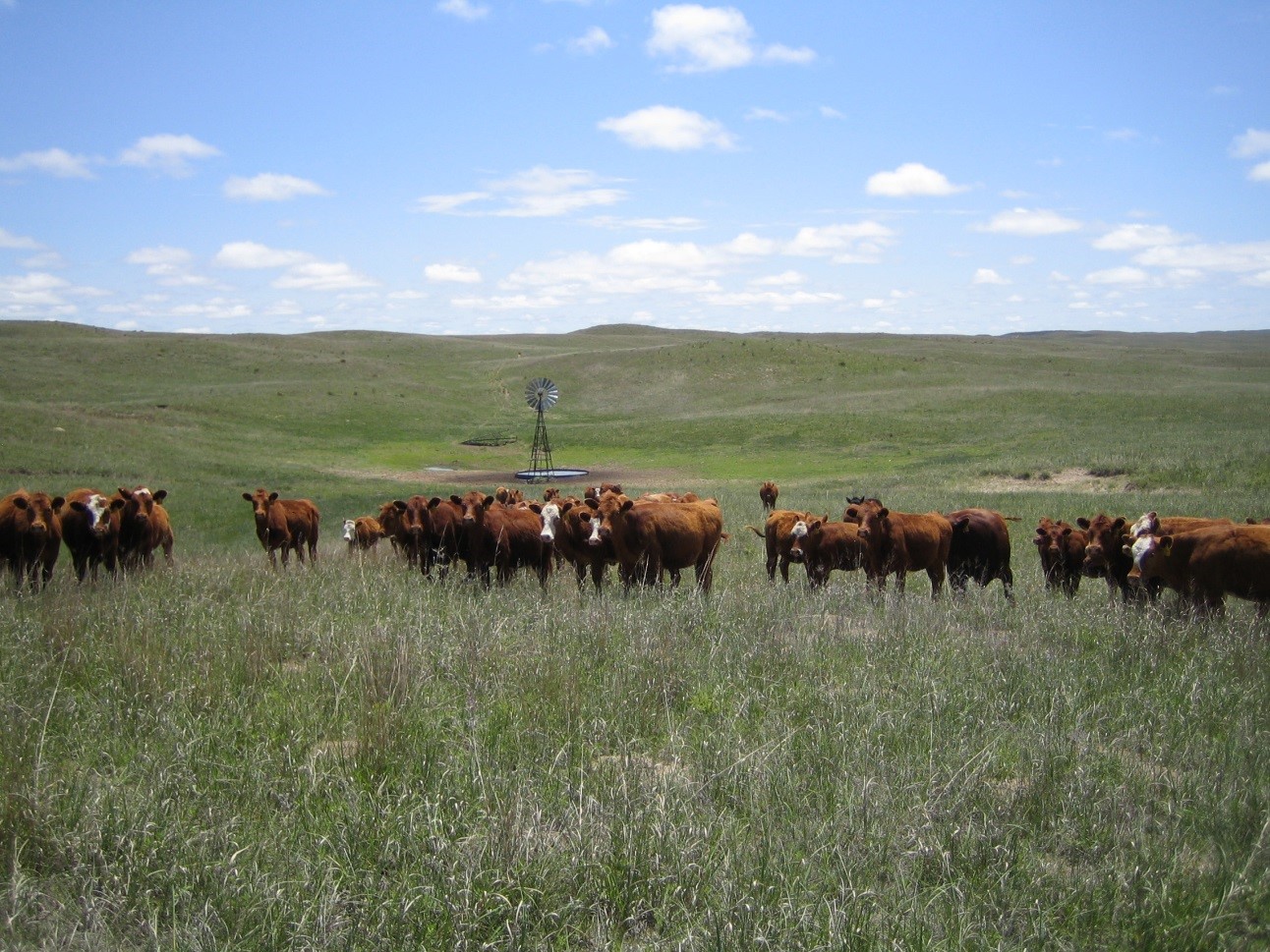
By Dr. Jerry Volesky, Nebraska Extension Range and Forage Specialist
The start of the growing season may be a couple of months away, but it is not too early to start thinking about grazing and forage plans for the upcoming year. Grazing plans should include projected cattle numbers (or stocking rates), turn out dates, and a pasture use sequence for multiple pasture rotations. In the spring, there is always anticipation about when and how much it will rain. This, as well as temperature, are the two primary factors that might affect pasture turn out date. April precipitation supports the initial growth of cool-season pasture grasses, but these species have the majority of their growth during the month of May. Warm-season grasses generally initiate growth in May with rapid accumulation of growth in June and early July.
Given the strong correlation between spring and early summer precipitation and pasture productivity, a drought plan is probably the most important component of the overall grazing or ranch plan. A drought plan can have varying levels of detail and complexity and can be customized to fit the specific needs of your operation. Some plans place an emphasis on critical or trigger dates. These are dates where one evaluates their total local precipitation up to that date. On May 1, for example, one could determine their total April precipitation or the total effective precipitation since the previous fall and compare that to long-term averages for their area. If precipitation totals are significantly below the averages, that could trigger a choice of several possible management actions such as an extended period of feeding hay or culling of some livestock. These actions are adjusted to account for varying levels of drought. Other important dates in relation to critical periods for rapid grass growth might include May 15, June 1, June 15, and July 1. Additional details and worksheets for all the components of a drought plan can be found at the ‘Managing Drought Risk on the Ranch’ website: (http://drought.unl.edu/ranchplan/Overview.aspx )
For those livestock producers that use various types of rotational grazing strategies, it is important to review grazing records from the previous years when planning the rotation sequence for 2015. Consideration should be given to when the time or period of grazing occurred in the previous years. Plans should adjust the schedule to avoid grazing the same pasture at the same time period in consecutive years.
Now is also a good time to plan the planting of spring or summer annual forage crops that might be grazed, hayed, or harvested as silage to replenish feed supplies. This includes selecting the forage crop type, fields that will be planted, identifying seed sources, and ordering the seed. Oats, spring triticale, and barley are annual cereal grains that can be planted from late March to early April to produce forage that can be grazed beginning in mid to late May or harvested for hay or silage in late June or early July. Growth of these cereal crops is very rapid in late May and early June, requiring good grazing management and the proper stocking rate to efficiently harvest the forage.
Forage peas are a legume that can be mixed in with spring cereals to reduce nitrogen fertilizer needed while maintaining or improving the protein levels of the harvested crop. When selecting a spring cereal to plant, preference should be given to varieties that have been selected for forage production. Select hooded or awnless varieties of barley if the crop is going to be harvested as hay. The quality of the forage produced from spring cereals will depend upon the stage of maturity at harvest. As maturity increases, quality declines rapidly. The optimum compromise between quality and yield generally occurs shortly after boot to early heading stages. Yield in terms of dry matter produced per acre generally increases 10 percent to 20 percent from the boot to early heading stages.
The primary warm-season or summer annual forages would include sudangrass, forage sorghum, sorghum-sudangrass hybrids, pearl and foxtail millet. As warm-season species, soil temperatures at planting should consistently be at the 60 to 65 degree level which is usually achieved by late May. These warm-season annuals could also be planted anytime up to early August and still produce forage, but greater amounts will be realized with earlier planting dates.